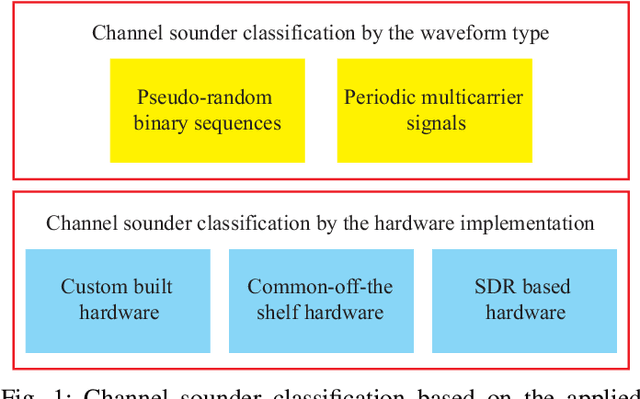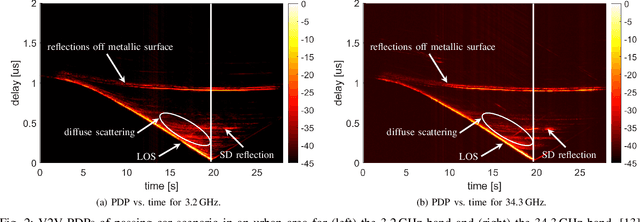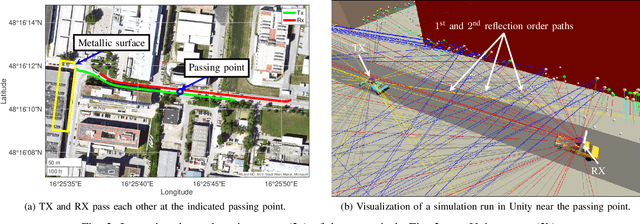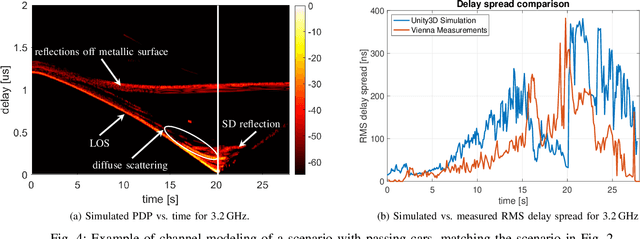Danilo Radovic
Methodologies for Future Vehicular Digital Twins
Dec 15, 2023



Abstract:The role of wireless communications in various domains of intelligent transportation systems is significant; it is evident that dependable message exchange between nodes (cars, bikes, pedestrians, infrastructure, etc.) has to be guaranteed to fulfill the stringent requirements for future transportation systems. A precise site-specific digital twin is seen as a key enabler for the cost-effective development and validation of future vehicular communication systems. Furthermore, achieving a realistic digital twin for dependable wireless communications requires accurate measurement, modeling, and emulation of wireless communication channels. However, contemporary approaches in these domains are not efficient enough to satisfy the foreseen needs. In this position paper, we overview the current solutions, indicate their limitations, and discuss the most prospective paths for future investigation.
Stationarity Evaluation of High-mobility sub-6 GHz and mmWave non-WSSUS Channels
Apr 03, 2023Abstract:Analysis and modeling of wireless communication systems are dependent on the validity of the wide-sense stationarity uncorrelated scattering (WSSUS) assumption. However, in high-mobility scenarios, the WSSUS assumption is approximately fulfilled just over a short time period. This paper focuses on the stationarity evaluation of high-mobility multi-band channels. We evaluate the stationarity time, the time over which WSSUS is fulfilled approximately. The investigation is performed over real, measured high-mobility channels for two frequency bands, 2.55 and 25.5 GHz. Furthermore, we demonstrate the influence of the user velocity on the stationarity time. We show that the stationarity time decreases with increased relative velocity between the transmitter and the receiver. Furthermore, we show the similarity of the stationarity regions between sub-6 GHz and mmWave channels. Finally, we demonstrate that the sub-6 GHz channels are characterized by longer stationarity time.
Evaluation of stationarity regions in measured non-WSSUS 60 GHz mmWave V2V channels
Oct 06, 2022

Abstract:Due to high mobility in multipath propagation environments, vehicle-to-vehicle (V2V) channels are generally time and frequency variant. Therefore, the criteria for wide-sense stationarity (WSS) and uncorrelated scattering (US) are just satisfied over very limited intervals in the time and frequency domains, respectively. We test the validity of these criteria in measured vehicular 60 GHz millimeter wave (mmWave) channels, by estimating the local scattering functions (LSFs) from the measured data. Based on the variation of the LSFs, we define time-frequency stationarity regions, over which the WSSUS assumption is assumed to be fulfilled approximately. We analyze and compare both line-of-sight (LOS) and non-LOS (NLOS) V2V communication conditions. We observe large stationarity regions for channels with a dominant LOS connection, without relative movement between the transmitting and receiving vehicle. In the same measured urban driving scenario, modified by eliminating the LOS component in the post-processing, the channel is dominated by specular components reflected from an overpassing vehicle with a relative velocity of 56 km/h. Here, we observe a stationarity bandwidth of 270 MHz. Furthermore, the NLOS channel, dominated by a single strong specular component, shows a relatively large average stationarity time of 16 ms, while the stationarity time for the channel with a rich multipath profile is much shorter, in the order of 5 ms.
 Add to Chrome
Add to Chrome Add to Firefox
Add to Firefox Add to Edge
Add to Edge